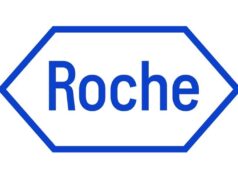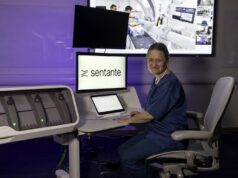 The much-anticipated results from the DAWN trial were finally revealed at the European Stroke Organisation Conference (ESOC; 16–18 May, Prague, Czech Republic) strongly indicating that beyond six hours of time-last-seen-well embolectomy in appropriately selected large vessel occlusion stroke patients is associated with improvement in clinical outcomes and with higher rates of functional independence (mRS 0–2) compared to standard medical therapy.
The much-anticipated results from the DAWN trial were finally revealed at the European Stroke Organisation Conference (ESOC; 16–18 May, Prague, Czech Republic) strongly indicating that beyond six hours of time-last-seen-well embolectomy in appropriately selected large vessel occlusion stroke patients is associated with improvement in clinical outcomes and with higher rates of functional independence (mRS 0–2) compared to standard medical therapy.
The DAWN (Diffusion weighted imaging (DWI) or computerized tomography perfusion (CTP) assessment with clinical mismatch in the triage of wake up and late presenting strokes undergoing neurointervention with Trevo) data were delivered in a joint presentation by co-principal investigators Raul Nogueira (Marcus Stroke & Neuroscience Center, Grady Memorial Hospital, Atlanta, USA) and Tudor Jovin (University of Pittsburgh Medical Center Stroke Institute, Pittsburgh, USA).
“Current evidence suggests that the benefit of thrombectomy rapidly decays over time and may no longer exist beyond 7.3 hours from stroke onset or time-last-seen-well. Indeed, the current AHA and ESO guidelines define a rigid therapeutic window of six hours as level 1a evidence. However, this treatment paradigm disregards individual variations in compensatory mechanisms for ischaemia led by, but not restricted to, collateral flow. Moreover, there is growing evidence to support a physiological rather than a purely time based approach where patients with clinical-core mismatch (meaning those patients with significant clinical deficits but still limited infarct size) could potentially benefit from reperfusion regardless of time to treatment. From the healthcare importance standpoint, wake-up stroke, stroke with unclear onset time, and witnessed late presenting stroke (>6 hours) represents a large proportion of LVOs (~40%), yet no proven treatment options exist for this population,” Nogueira noted.
In response, DAWN aimed to demonstrate superior functional outcomes at 90 days with Trevo thrombectomy (Stryker) plus medical treatment compared to medical treatment alone in appropriately selected patients who could be treated six to 24 hours after last seen well. The study is a global, multicentre, adaptive, population enrichment, prospective randomised, open, blinded endpoint, controlled FDA IDE trial.
Patients with wake-up and late-presenting stroke were screened and if they met the inclusion criteria (age ≥18 years, NIHSS ≥10, pre-mRS 0–1, time-last-seen-well to randomisation 6–24 hours, excluding large infarcts and confirmation of large vessel occlusion on CTA or MRA) underwent imaging with the RAPID software, CTP or DWI. Qualifying patients had to meet the following clinical imaging mismatch criteria: patients ≥80 years old had to have NIHSS ≥10 with a core ˂21cc; ˂80 year old patients had to have NIHSS ≥10 with a core of ˂31cc or NIHSS ≥20 with a core of ˂51cc. Patients meeting these criteria could then be randomised 1:1 to either thrombectomy with Trevo or control medical therapy after stratification for clinical imaging mismatch subgroup, site of occlusion and time-from-last-seen-well to randomisation.
Patients were followed for 90 days and the primary efficacy endpoint was assessed via utility-weighted mRS with a nested dichotomous mRS of 0–2 at 90 days. The primary safety endpoint was stroke-related mortality at 90 days.

The study employed a Bayesian statistical approach with the first futility/enrichment analysis when 150 patients were enrolled, the first efficacy analysis when 200 patients were enrolled and the maximum sample size was 500 patients. The threshold for declaring success depended on the degree to which the population had been enriched. If there was no enrichment and the probability of a treatment effects was ≥0.986 the intervention was to be deemed efficacious.
After the first interim analysis allowing trial termination based on efficacy, with 206 patients enrolled, the data and safety monitoring board (DSMB) recommended enrolment be terminated.
One hundred and seven patients were randomised to receive Trevo and 99 patients to receive medical management. Four patients are missing outcomes at 90 days but their 30-day outcome was used for analysis. Two patients were lost to follow up after 30 days and two patients withdrew after the 30-day visit.
Baseline characteristics were similar in both groups with a median age of 72 years, NIHSS 17, baseline core volume of 8cc, and 39% male patients in the treatment arm, compared to a median age of 73 years, NIHSS 17, baseline core volume of 8.8cc, and 51.5% male patients in the control arm. In both arms, 75% of the qualifying occlusions were located in the M1, 20% in the ICA and 3% in the M2.
In terms of time-last-seen-well to randomisation, the mean time was 13.4±4.1 (median, 12.2) hours in the treatment arm and 13.0±4.5 (median, 13.2) hours in the control arm (p=0.53), suggesting that more that 50% of the patients were treated beyond 12 hours from time-last-seen-well. In the stroke type sub-population, wake-up strokes were more prevalent in the treatment arm (64.5%) than in the control arm (47.5%), 10.3% of patients in the treatment arm had a witnessed stroke and 25.2% of patients had an unwitnessed stroke, compared with 14.1% witnessed stroke and 38.4% unwitnessed stroke in the control arm.
In the treatment arm, procedure duration was 56 minutes median and the total number of Trevo device passes was a median of two. Core lab adjudicated TICIs post-procedure were as follows: modified TICI ≥2b=84%; original TICI ≥2b=72.6%; and TICI 3=10.4%.
The primary safety endpoint was stroke related mortality with no significant difference observed between the two groups. The symptomatic intracerebral haemorrhage (sICH) rate was 4.8% in the treatment arm versus 3.2% in the control arm. A statistically significant difference was observed in neurological deterioration (defined as greater than 4 points worse on the NIHSS by five days) between the two groups with 10.5% in the treatment arm versus 22.1% in the control arm (p˂0.01).

In the weighted mRS based co-primary outcome, the mean mRS value in the treatment group was 5.5 versus 3.4 in the control group; a 2.1 difference in the weighted mRS score, which is highly significant with a Bayesian probability of superiority of >0.9999 (which is similar to p˂0.0001). The co-primary endpoint of 90-day functional independence was 48.6% in the treatment group versus 13.1% in the control group; a 35.5% actual difference, which is highly significant with a Bayesian probability of superiority of >0.9999. This translates to a number needed to treat of 2.8 to achieve functional independence.
“As far as Rankin distribution, again, outcomes were highly significant favouring Trevo, translating into a number needed to treat to shift someone from a higher level of disability to a lower level of disability of two. We were pleased to see that the treatment effect persists up to 24 hours, albeit, the treatment effect goes down with time. Also the treatment effect in the 6–12-hour time window (55.1%) compared with the 12–24-hour time window (43.1%) was essentially unchanged and compared to the control arm (20% vs. 7.4%, respectively) was statistically significant,” Jovin reported.
In terms of other effectiveness endpoints, infarct growth was lower in the treatment group with median core size of 8 pre-treatment and 8 at 24-hours, versus a median core size of 8.8 pre-treatment and 22 at 24 hours. Similarly, revascularisation rates at 24-hours were significantly in favour of the treatment group with 76.6% compared with 38.4% in the control group (p˂0.001). All-cause mortality was even in both groups at 18%.
“In conclusion, we can say that thrombectomy with Trevo in DAWN-eligible patients is associated with improvement in clinical outcomes across the entire range of utility-weighted mRS and with higher rates of functional independence (mRS 0–2) compared to standard medical therapy. What that means is that for every 100 patients treated with endovascular therapy, 49 will have a less disabled outcome as a result of treatment, including 36 who will be functionally independent,” Jovin explained.
Further, Jovin pointed out that the treatment effect size in DAWN is the highest of any stroke trial to date, which suggests that the presence of clinical-core mismatch is a critical predictor of treatment effect independent of time to presentation.
In the DAWN trial, treatment effect persisted throughout 24-hours from time-last-seen-well, however, patients treated earlier had better outcomes. “This means that the mantra “time is brain” is unchanged. Eligible patients should still be treated as quickly as possible. It is just that eligibility for treatment should not be restricted by time windows,” Jovin clarified. The study clearly showed that thrombectomy with the Trevo device in patients presenting beyond six hours of time-last-seen-well had a comparable safety profile to thrombectomy performed within six hours.
To get some deeper insight into the impact that the DAWN trial could potentially have on clinical practice, NeuroNews caught up with co-principal investigators, Tudor Jovin and Raul Nogueira.
How do you think the results of the DAWN trial will affect current practice?
Jovin: We believe that the results of DAWN have the potential to affect clinical practice in a fundamental way because it will hopefully raise awareness amongst healthcare providers that benefit of embolectomy for stroke may extend way beyond the currently recommended guidelines of six hours in selected patients. This will hopefully lead to a reorganisation of systems of care based on the ability to detect patients who benefit from thrombectomy regardless of the time window; especially in less developed countries that lack the infrastructure for routine delivery of patients with LVO stroke to endovascular centres within six hours (which includes the most populous regions in the world). Thrombectomy for LVO stroke can now become a real option.
Nogueira: We hope that a large proportions of stroke patients, who were previously excluded from treatment due to unknown or late stroke onset time, will now have the benefit of thrombectomy. Large scale education of patients and medical professionals will be necessary to highlight that this late presenting cohort of patients may still benefit from thrombectomy but that faster times to treatment remain absolutely critical for the achievement of the best possible outcomes.
What questions remain to be answered?
Jovin: DAWN was designed to maximise the treatment effect in order to yield positive results based on a relatively small sample size. As such, given the number needed to treat of 2.8 for independent level of functioning, inclusion criteria can be viewed as being too conservative as a broader patient population than that defined by the DAWN criteria may still benefit. Therefore, specifically with regards to the time window used in DAWN, an important question remains that whether by liberalising inclusion criteria (larger baseline core, lower NIHSS, inclusion of patients with M2 MCA occlusion, less precise imaging criteria) would still result in benefit that is meaningful at a societal level.
Nogueira: We have clearly demonstrated a strong benefit of thrombectomy in properly selected stroke patients treated within the 6–24 hour window. However, as suggested by the large treatment effect size observed in the DAWN trial, our clinical-imaging mismatch criteria might have been too stringent. Future studies should focus on better establishing the minimum boundaries of benefit in this patient population.









